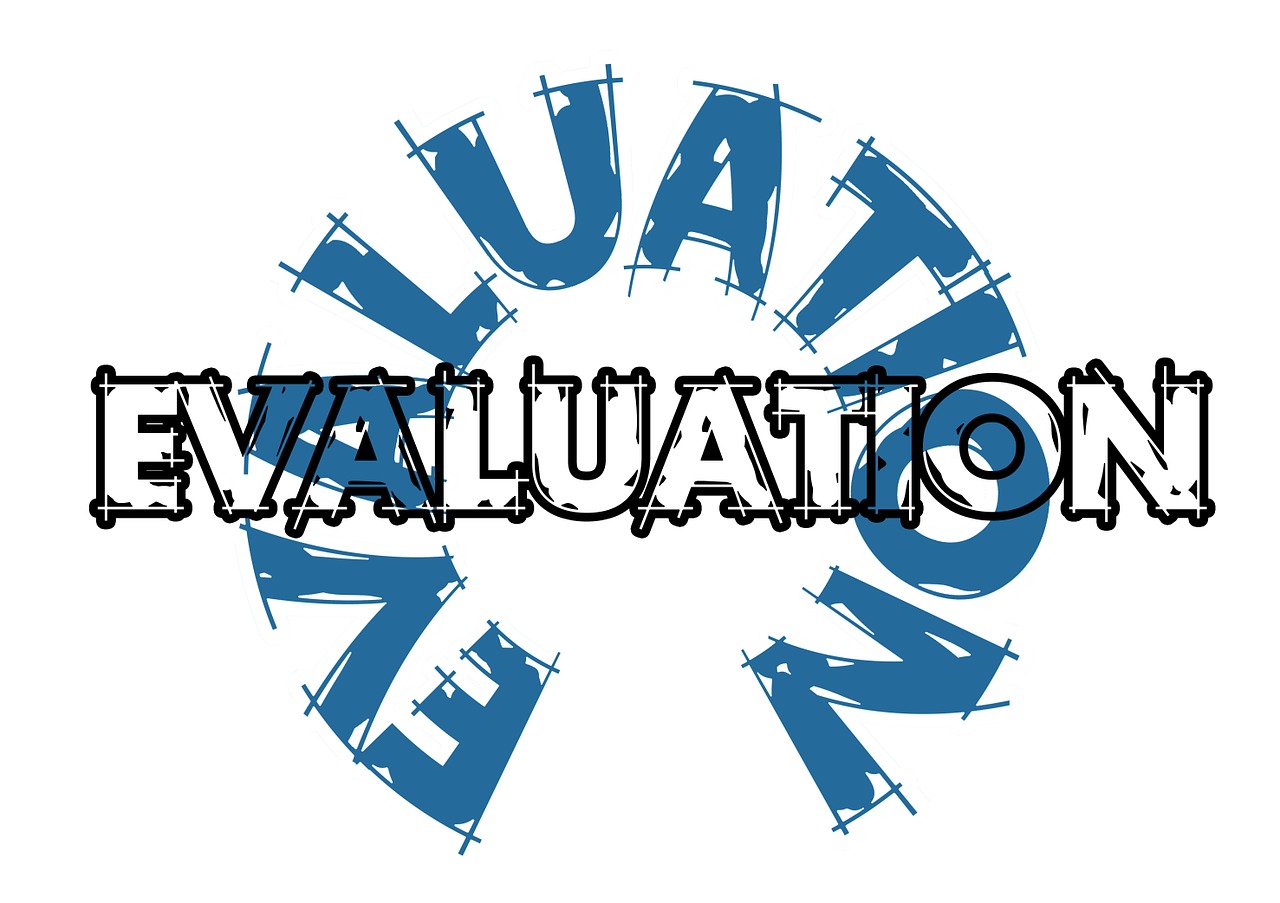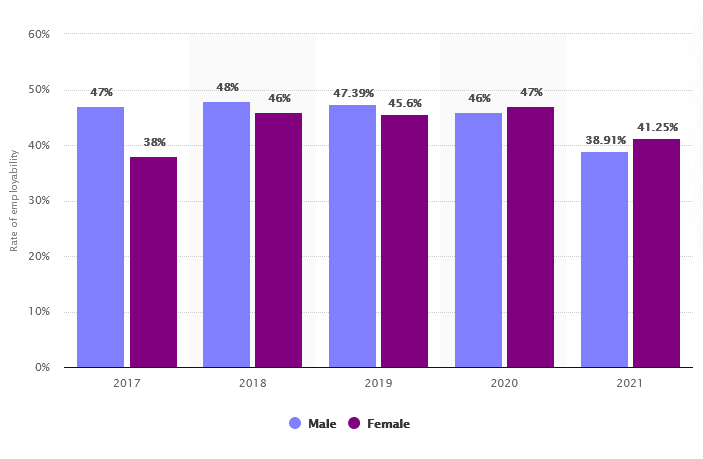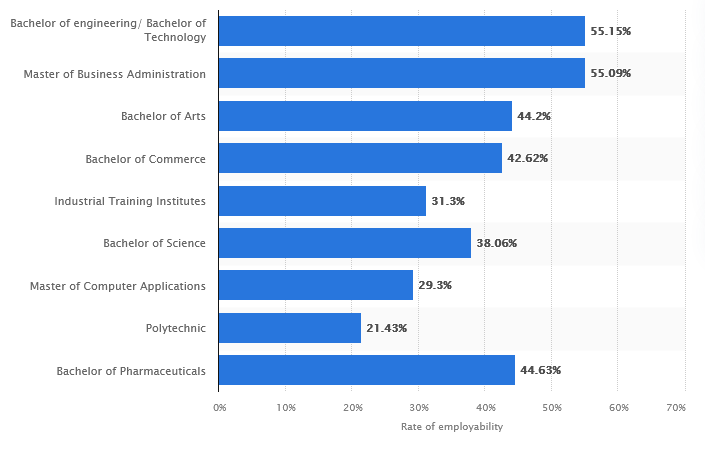Certified Employability Assessment Tests
Educated Unemployment in India is defined as not finding a job in a particular industry despite holding a relevant degree and willing to work at industry with standard wages/ salaries. The deciding factor of getting a decent job is not the number of years that a job seeker spends in schools or colleges, but the quality of education, knowledge and competence acquired during these years. According to reports, almost 2 million graduates and half a million postgraduates are unemployed in India, majority of which are not suitable for any kind of industry role.
- Indian industry needs a catchment of quality candidates, having adequate knowledge and competency to be recruited.
- The potential recruiters face challenges to search talent from Tier I, II & III cities across India
- No demarcation in University grade sheets, where majority scored 80% and above during the pandemic phases
- Hiring resources across geographies involves significant time, cost and efforts
- Industries are not always equipped with proper evaluation team to reach out and ensure standardized & effective hiring across geographies
- There is hardly a benchmark available in India to assess the employability of passing out candidates, freshers and experienced professionals
- India produces millions of undergraduate diplomas, graduates and post graduates every year across various disciplines and trades
- A substantial percentage usually go for higher studies, keeping the rest for seeking jobs in Tier I, II and III cities across the country
- The under-served job seekers, especially those who migrate from Tier II and III cities to Tier I cities in search of better job opportunities, face the struggle ever so often
- Although they somehow secure decent jobs, the struggle to find their way into the corporate arena remains
- There is no guideline or roadmap available for the passing out students to be prepared in line with required industrial skill-sets and become industry-ready
Conduct Employability Assessment, well-structured and standardized in all India perspective is the need of the hour to bridge the gap, aiming to cater the aspiring candidates across various domains and trades.
- Graduates and Post Graduates in Engineering and Technology
- Undergraduate Diploma in Engineering and Technology
- Graduates and Post Graduates in Commerce, Accounting and Finance
A multi-layer evaluation mechanism has been tailored for multi-level candidates (entry, intermediate and professional levels) who aspire to become professionals in their respective domains. The fundamental principle is to assess and assist the students to understand the concepts in depth and apply the same with adequate proficiency.
- This will inculcate positive thinking, brain storming and re-shaping the aptitude and the attitude specifically desired for the industry to provide a better throughput shaping the economy of the nation.
- This will fill the gap between industry requirement and academic proficiency to produce a balanced work force which will be in sync with the ever-changing demands of industry, creating opportunities for the deserving candidates even from remote locations.
Disciplines & Trades
Graduate & Post Graduate
Under Graduate Diploma
Graduate & Post Graduate
Our Objective
- Identify the potential employable candidates from Tier I, II & III cities PAN India through employability assessment
- Upskill aspiring candidates down the line to make them job ready
- Bridge the gap between employable candidates and potential recruiters through lifetime placement assistance

Computer Based Exam
Uniform & Transparent
PAN India Talent Pool
Visibility to Recruiters
Employability Score Card
Certification of Merit
For aspiring Candidates
For Industries & Corporate
For Placement Agencies
Disciplines
& Trades
Subject Matter
Experts
Indian States
and UTs
Exam Cities
PAN India
Educated unemployment
In simple words, it is not finding a job in a particular industry despite holding a relevant degree and willing to work at industry standard wages/salaries.
It’s not the number of years that a job seeker spends in schools or colleges, that’s going to land a job. What matters is the quality of education and knowledge acquired during these years. Most of our childhood and youth is spent in mugging up textbooks and very less in practical understanding and acquiring skills.
According to a report, almost 2 million graduates and half a million postgraduates are unemployed in India. around 47% graduates in India are not suitable for any kind of industry role. Above all, the level of educated unemployment in India increases with higher education. while, at the primary level, youth unemployment is somewhere around 3.6%, it is 8% at the graduate level and 9.3% at the post-graduate level.
The number of engineering institutes in India stood at 337 in 1990, which in 2017 stood at 6427
Above all, the present education system has become a way of business for most. The fees have sky-rocketed, whereas the quality of education has remained substandard. This tends to leave most youth at the mercy of government colleges, which, by far, are completely lagging behind when compared to private institutes. While increase in the number of institutes in any given field is important in the light of rising population, the quality of these institutes was and has never been touched upon. In India, the rising number of institutes only means compromising on quality of education, probably due to lack of monetary resources and funding.
A very high number of graduates do not have required proficiency in English communication. The role of primary education steps in when we talk about skills. It is important to focus on basic skills like communication and language at the elementary level.
A report says that 48% of urban youth face the problem of getting a suitable job. Of the ones employed, 38% are dissatisfied. This also means lack of good working environment and conditions.
Lack in decent remuneration, especially in the field of engineering and legal studies, have been widely reported by media. While the companies and lawyers might be making it huge, they fail to adequately compensate their fellow employees and juniors. This acts as a barriers for many graduates seeking employment. They will turn their back to the right opportunity knocking their doors, leaving them idle.
Talking about the youth population and youth unemployment in India, according to a source, every year, India sees 8-9% increase in enrolment at the higher education level. India is among the top 5 countries to have highest number of students going to the universities. The problem here is that there is no equivalent rise in the number of opportunities.
The supply of graduates is more than the demand there is. This gap especially widens in the times of recession, when the companies and organisation find it difficult to cope up with the crumbling economy, resulting in laying off of employees, much less hiring new.

Employability Index
Employability Index means possessing a set of qualification, skills, knowledge, understandings, attitude and other personal attributes that make an aspiring candidate more likely to gain employment and be successful in the chosen occupations.
The Employability across India
The employability rate for men in India stood at 39% in 2021, which was a decrease by over 7% compared to the previous year. On the other hand, the employability rate for women in the country leaped from 38% in 2017 to 41% in 2021. This marks a very positive growth for both the business sector as well as the social structures in the country.
Source: Statista


Which domains have more employable talent?
In 2022, undergraduates in engineering and technology domains had the highest employability rating at just over 55 percent. In comparison to that graduates with a computer application degree had an employability scope of around 29 percent.
Source: Statista
